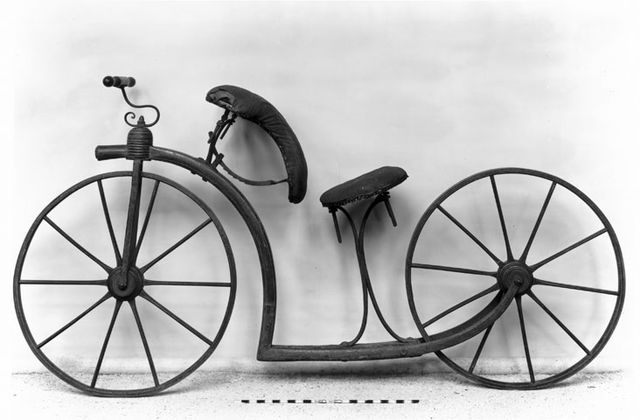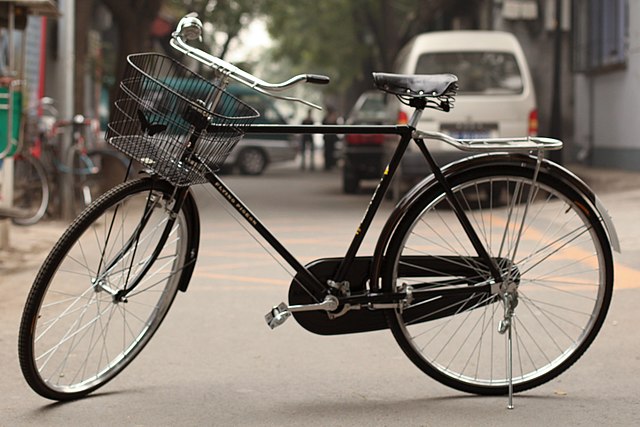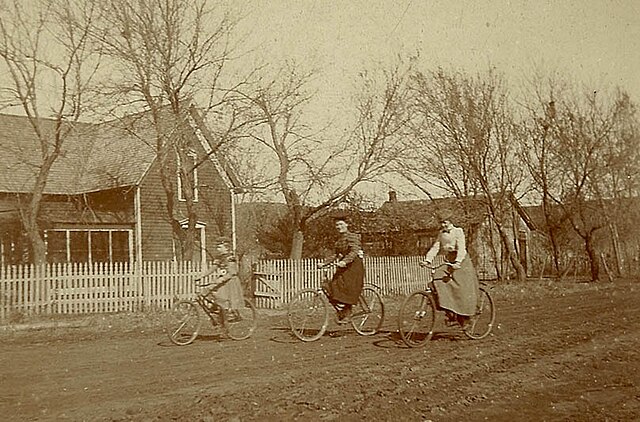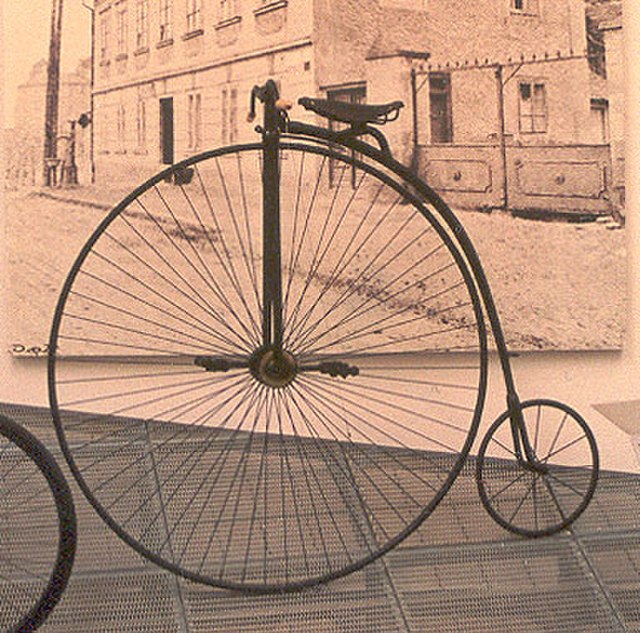The dandy horse, a derogatory term for what was first called a Laufmaschine, then a vélocipède or draisienne, and then a pedestrian curricle or hobby-horse, or swiftwalker, is a human-powered vehicle that, being the first means of transport to make use of the two-wheeler principle, is regarded as the forerunner of the bicycle. The dandy horse is a foot-propelled vehicle, powered by the rider's feet on the ground instead of the pedals of later bicycles. It was invented by Karl Drais in 1817, and then patented by him in France in February 1818 using the term vélocipède. It is also known as a Draisine, and as a draisienne (French: [drɛzjɛn] in French and English. In English, it is also sometimes still known as a velocipede, but that term now also has a broader meaning.
Wooden dandy horse (around 1820), a patent-infringing copy of the first two-wheeler
Original Laufmaschine of 1817 made to measure.
Johnson’s Ladies’ Walking Machine, sold in London 1818-1819
The remaining extant Johnson’s Ladies’ Walking Machine, in the Science Museum, London
A bicycle, also called a pedal cycle, bike, push-bike or cycle, is a human-powered or motor-assisted, pedal-driven, single-track vehicle, with two wheels attached to a frame, one behind the other. A bicycle rider is called a cyclist, or bicyclist.
The most popular bicycle model—and most popular vehicle of any kind in the world—is the Chinese Flying Pigeon, with about 500 million produced.
Women on bicycles on unpaved road, US, late 19th century
A penny-farthing or ordinary bicycle photographed in the Škoda Auto museum in the Czech Republic
The Svea Velocipede by Fredrik Ljungström and Birger Ljungström, exhibited at the Swedish National Museum of Science and Technology








